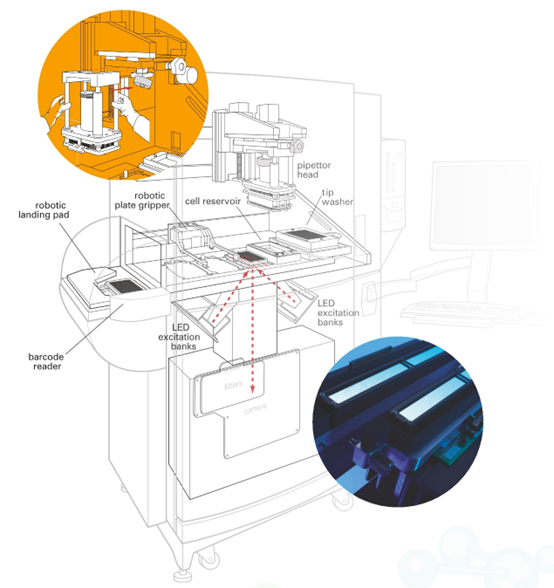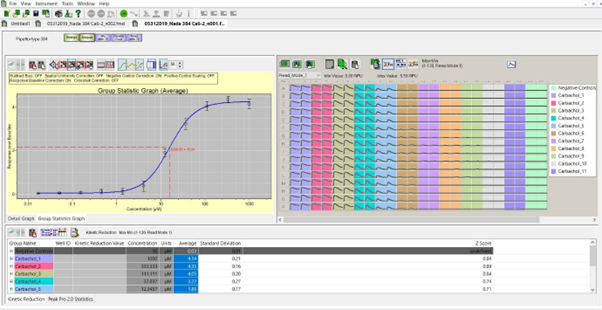The industry-leading kinetic screening platform, developed on the success of supporting GPCR and membrane potential assays, provides researchers with a real-time screening of human-derived induced pluripotent stem cells (hiPSCs) that have been differentiated into cardiomyocytes and neurons for quick toxicology and lead compound identification.
The FLIPR® Penta High-Throughput Cellular Screening System captures images up to 100 times per second and analyzes calcium oscillation patterns using more than 30 measurements. This system quickly recognizes critical events, such as delayed beat recovery and irregular beating, to reveal insightful information about how different compounds affect cells.
FLIPPR applications
Various assays are supported by the FLIPR Penta System, including GPCR assays that use FLIPR Calcium Assay Kits and membrane potential tests that use the FLIPR Membrane Potential Assay Kit, FLIPR Potassium Assay Kit, and FLIPR Calcium Assay Kit. With the EarlyTox Cardiotoxicity Kit, cardiomyocytes can be utilized to assess compound reactions earlier in the drug discovery process.
Source: Molecular Devices UK Ltd
| . |
. |
| GPCR |
Monitor GPCR activity and corresponding intracellular second messenger changes (Calcium and cAMP) using fluorescence and luminescence cell-based assays |
| Membrane Potential |
Observe real-time membrane potential changes associated with ion channel activation and ion transporter proteins |
| Cardiomyocytes |
Observe calcium flux to assess cardiotoxicity in the early stages of drug discovery |
| Potassium channels |
Measure functional activity of ligand- and voltage-gated potassium channels |
| Ligand-gated Calcium Channels |
Measure the change of global intracellular calcium, in response to the activation of ion channels |
| 3D assays |
Detect calcium oscillations in 3D cultures, providing a biologically relevant assay system to assess potential new pharmaceutical treatments and environmental toxins |
| Biochemical assay |
Enable fast “inject and read” kinetic enzyme assays, increasing the throughput of biochemical assays compared to standard plate readers |
Fast effective high-throughput cellular screening
User-exchangeable 96-, 384-, and 1536-well pipettors can be installed without tools in minutes. Automatic pipettor recognition and alignment ensure pipetting accuracy and precision.
A patented, contact-based elastomeric technique provides a simultaneous liquid transfer to about 2,000 cells per well in a 1536-well plate. The Advanced Workflow Engineering Solutions team can help users improve speed even more.

Image Credit: Molecular Devices UK Ltd
Intuitive, user-friendly software interface
The FLIPR Penta system employs ScreenWorks software to develop and execute experimental procedures.

Image Credit: Molecular Devices UK Ltd
Protocols can be set up using a drag-and-drop interface to include:
- Cell suspension delivery with automatable cleaning protocols
- Standard fluorescence or optional aequorin luminescence detection
- Simple-to-create automation protocols
- Fluorescent or luminescent read modes
- Simultaneous transfer of 96, 384, or 1536 liquid or cells in suspension
- Complex quadrant, multiple aspirations, or multiple dispensing liquid handling
- Single or ratiometric kinetic cell-based reading
- Tip washing with up to two solvents
The FLIPR Penta system is just one example of an innovative, high-performance solution that substantially enhances research efficiency and effectiveness. It is specifically designed to satisfy the demands of research experts in drug development and other advanced research, and it provides the industry-leading capabilities necessary to accelerate the time to market for new drugs.